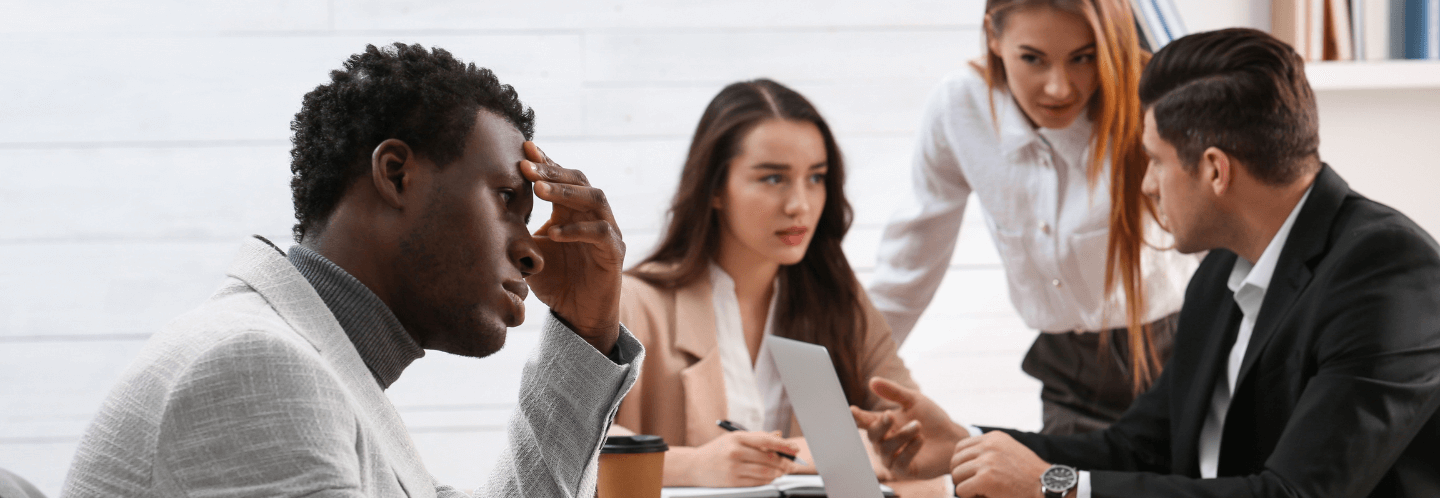Hidden Forces Unveiled: Overcoming Unconscious Bias for Inclusivity and Growth



We tend to pride ourselves on being logical, rational thinkers, but unconscious biases frequently sway our decisions and actions.
How many times do you find yourself reacting to situations emotionally? Does someone say something that strikes a nerve, and you end up taking the frustration out on everyone for the rest of the day?
Maybe you didn’t like how you saw yourself in the mirror this morning, and it put a downer on every interaction you had as you tried to mask your lack of confidence.
These are all subtle but impactful ways we act emotionally, and these invisible forces tend to have more of an effect on our lives than we may give credit for.
These hidden forces deeply and significantly impact our perceptions, interactions, and decision-making in personal and professional settings.
Let’s dive into the concept of unconscious bias and its origins and discuss practical tips for identifying and mitigating these biases to cultivate a more inclusive, fair world.
Unconscious bias represents automatic, often unintentional judgments or assumptions we make about people or situations based on past experiences, cultural norms, and personal beliefs.
It’s your emotional response when, maybe, a member of the opposite sex says something you don’t like or an employee from another culture walks into the office. Perhaps it’s a same-sex couple kissing or a gender-fluid individual saying hello.
We all automatically make judgments in situations like this. We’re conditioned to do so, either positively, negatively, or a mix of both.
However, these biases can subtly influence our behavior and decision-making. A study published in the Journal of Personality and Social Psychology found that people make decisions based on unconscious biases in just milliseconds.
Common types of unconscious biases include:
Unconscious biases stem from our brains, evolving due to biological and environmental factors.
At the end of the day, it’s nothing to fear because it’s an entirely natural way to be.
Our ancestors relied on instincts and quick judgments for survival, quickly categorizing people and situations as safe or dangerous. Neuroscientists have found that the amygdala, a region of the brain associated with emotion and memory, plays a significant role in unconscious bias.
However, our biases are not always accurate, and while they have their place (you may have a bias that protects you from walking down dark alleyways at night), they may sometimes cause us problems if we don’t keep them in check and have them work for us, rather than being the ones in control.
Our upbringing and social environment shape our unconscious biases, exposing us to cultural norms, beliefs, and stereotypes that influence our perceptions.
For example, a study in the journal Child Development found that children as young as two years old can exhibit racial biases influenced by their environment.
If you see a parent displaying racial remarks from a young age, then you’re far more likely to have racist tendencies yourself.
Related reading: Be the Change: How to Become an Effective Ally in the Workplace
To promote inclusivity, equity, and fairness, it’s crucial to recognize and tackle our unconscious biases. Some practical steps include:
We can create a more inclusive, equitable, and diverse environment by addressing unconscious biases. Some ways to encourage inclusivity and challenge biases include:
Unconscious biases are ingrained within our minds, shaped by a mix of evolutionary and cultural factors. While we may not completely eliminate these hidden forces, we can take steps to recognize, understand, and manage them.
By increasing our self-awareness, exposing ourselves to diverse perspectives, and implementing strategies to minimize bias, we can create a more inclusive, equitable, and diverse world for everyone.